













The magazine of the art-form of the photo-essay
“A free, really high quality photo-essay magazine. Fabulous!”
Stephen Fry. British actor, writer and film & documentary maker

March 2015 back issue


by Joseph Rodriguez

continues to arouse nationalist sentiments between two countries.
With the fall of the Communist regime and the introduction of a free market economy and influx of Western concerns,
Transylvania is on the brink of sweeping social transformation. Under Communism, the entire country was isolated
from all outside influence, its population prohibited from contact with the West and a greater tolerance for the diversity
found with the Romanian borders.
The ramifications of these changes to the small communities within Transylvania are worth considering. I have been
to Romania several times in recent years documenting some of its social institutions, but soon after I became
interested in showing the life of many of its villages throughout the Transylvania and Moldova regions.
The way of life of these villages is strongly defined by an adherence to tradition. The history and relative isolation of
Transylvania has created and reinforced deeply rooted cultural practices. Religion has historically played an important
role, and the region has been marked by competing religious beliefs. The strong display of religious faith, coupled with
the richness of local folklore, such as the Dracula myth, are integral to the area’s belief systems. Transylvania and
Romania are known for and abundance of festivals year-round with celebrates both the religious and secular aspects
of the culture. Transylvania’s unique history is also evident in the diversity and wealth of its architecture; medieval
Orthodox churches, monasteries, and feudal castles predominate the landscape.
Life in the villages of Transylvania, like the ones I photographed, have remained unchanged and continue to reinforce a
self-sufficient tradition. Working the land is a vital concern for the community and the focus of the daily activities,
involving the entire family. The home is a special place, and women devote much attention to the decoration of interior
spaces, a style influenced by the religious architecture of the area. Women of these communities continue to produce
stunning handiwork and all of their own clothing. Hunting of local wildlife, such as bears and wild boars, is also still
practiced, aided by the richness of the surrounding natural resources.
The farming tradition, however, is now threatened by the migration of the youth population of these villages to the “more
glamorous” larger cities where they work in factories. And the older population is similarly influenced by the
introduction of Western culture via television; one can now see that television has become a major factor in creating
new expectations among even the older villagers. Farming has become less desirable to them. This shift occurs when,
with the end of communism and the Ceausescu regime, more and more rights are being returned to the region’s
residents.
However, life in the cities such as Cluj and Tirgu Mures, and the work found in factories there, stands in stark contrast
to the pastoral tradition of the agrarian villages. The increased industrialization of Romania, encouraged throughout
the Communist era, remains unregulated, causing conditions and disturbing levels of pollution for workers and city
residents.
These communities, so marked by their preservation of a centuries-old culture, reinforced by the historical and
geographic isolation of the area, are now facing a challenge to their traditional way of life. Signs of the future life of
these communities have yet to take shape. As these people encounter the new ways of Western culture and the free
market, what will they assimilate, and what will they reject, in favor of maintaining their own history?
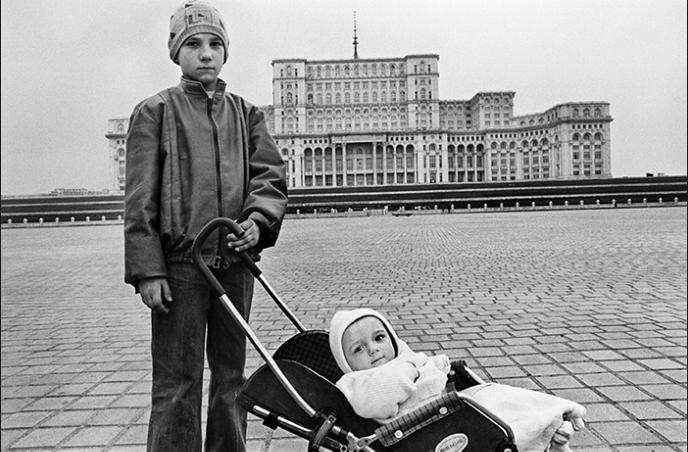
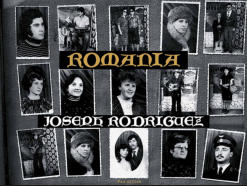
Romania 1990-1996
In the West, Transylvania has long been imagined as a dark, fabled land
of mythical proportions. Separated from the rest of Romania by the
Carpathian Mountains and the Transylvania Alps, the 99,837 square
kilometer region is famous for its dramatic geography of glacier-formed
ice caps, caves, alpine meadows, stunning mountain ranges and gorges,
dense forests populated by bears and wild boars, and valleys where
buffalo still roam. The area is marked by a complicated history, witness to
several occupations, wars, and territorial disputes. While the Treaty of
Trianon in 1920 definitively placed the area within the Romanian state,
giving power to the Romanian majority, the population of the area remains
a diverse ethnic mixture of Hungarians, Germans, Gypsies, and others.
Indeed, Hungarians still refer to Transylvania as Erdely, and the area
Ceausescu’s Palace. Comment from my interpreter on Ceausescu’s Republic House, “All dictators that live in this
world have the same characteristics; their dreams are big dreams of power. Ceausescu was like Stalin, Hitler. They
want that their people have the impression of their grandeur. The people are little and they are great.” It cost the
Romanian people 22 million lei that is the salary of its workers for one year. 1990. The Palace of the Parliament
(Romanian: Palatul Parlamentului) in Bucharest, Romania is a multi-purpose building containing both chambers of the
Romanian Parliament. According to the World Records Academy, the Palace is the world's largest civilian building with
an administrative function, most expensive administrative building and heaviest building.
The Palace was designed by architect Anca Petrescu and nearly completed by the Ceaușescu regime as the seat of
political and administrative power. Nicolae Ceaușescu named it the People's House (Casa Poporului),[4] also known in
English as the Palace of the People. Bucaharest, 1990
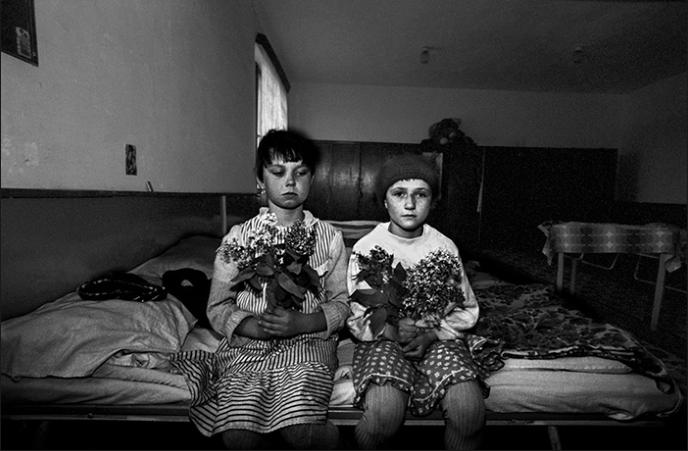
Zvoristea, Romania. Children at this boarding school are allowed to go home on weekends but, because their parents
are either far away or without resources, many stay.
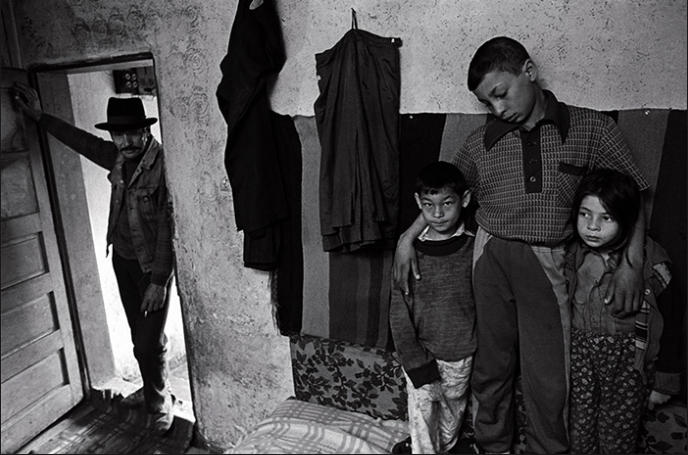
Bacau, Romania. A gypsy family.
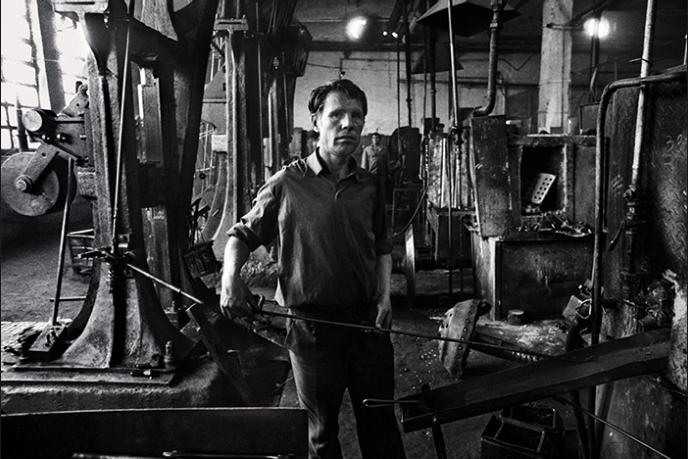
Bacau, Romania. Intreprinderea Mecanica (Factory), a nut and bolt factory. Before the revolution the factory was open
365 days a year.
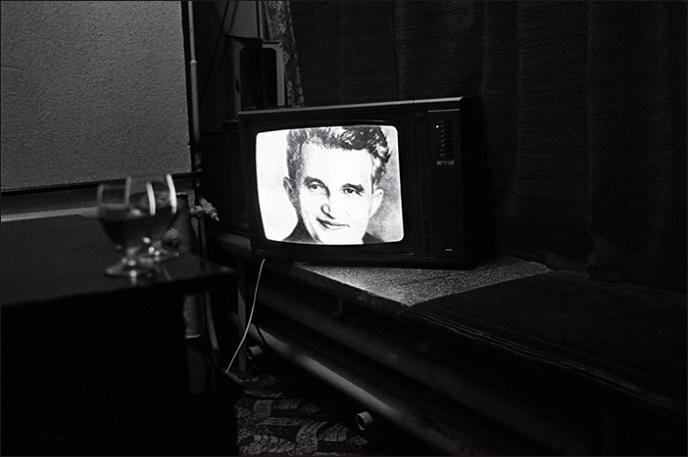
Bacau, Romania. The Communist dictator Nicolae Ceaucescu’s image on the television. His public trial and execution
were rerun on television again and again. His family policy promoted having large families even if there was no money
to feed them because he was afraid of losing his working population. The state then created multiple institutions to
support children whose needs could not be met by their parents, including orphanages.
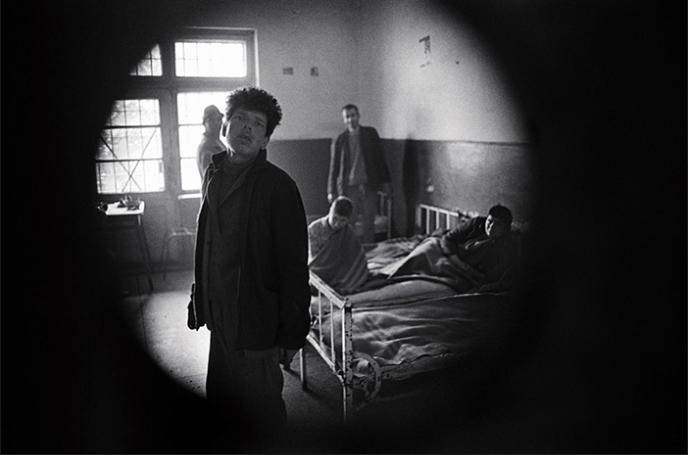
Tigra Ocna, Romania. The maximum security unit in a psychiatric hospital.
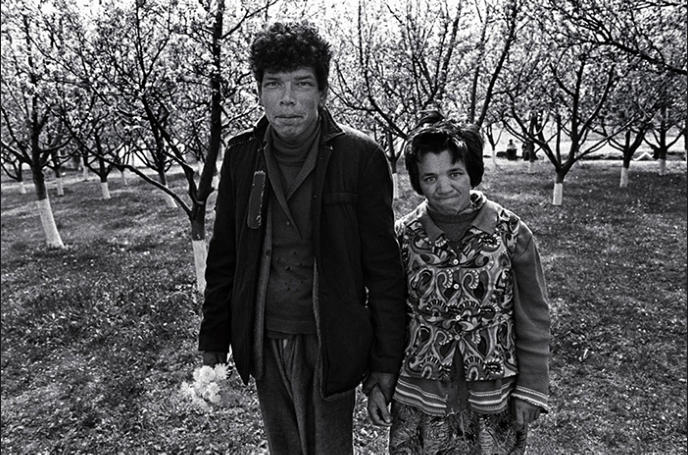
Tigra Ocna, Romania. Robbie and his girlfriend in the psychiatric hospital.
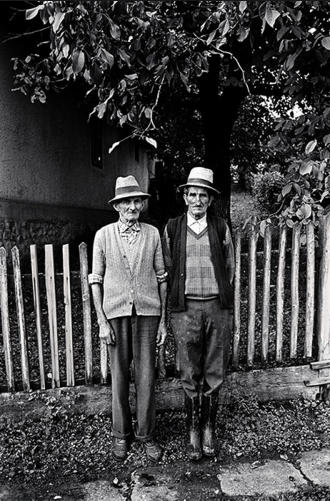
Markod, Transylvania, Romania. Old Friends.
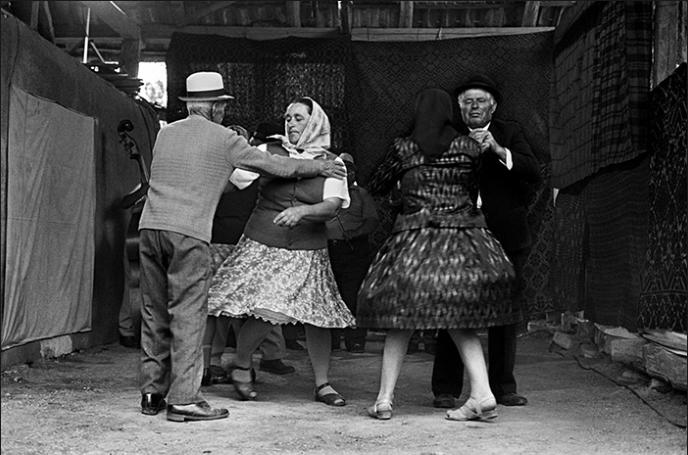
Palatka, Transylvania, Romania. Traditional Hungarian dancing.
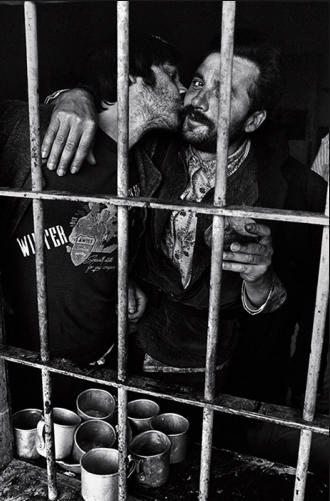
Tigra Ocna, Romania. Patients at psychiatric hospital
celebrate the execution of Nicolae Ceaucescu.
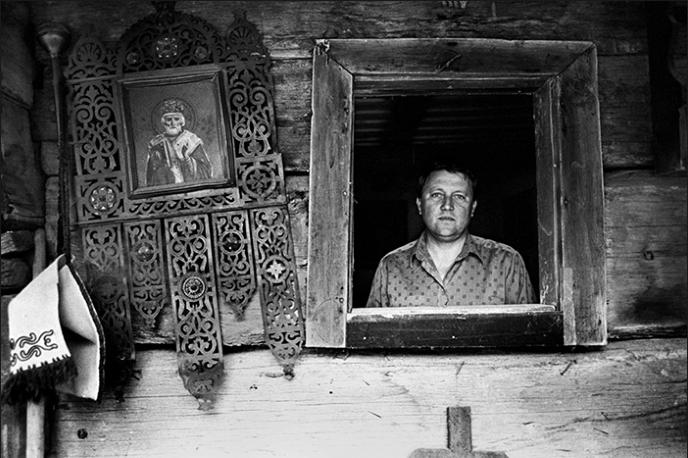
Bonstida, Transylvania, Romania.
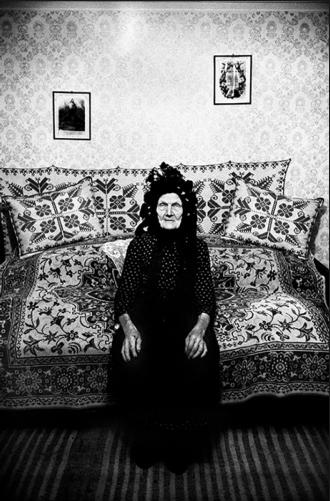
Markod, Transylvania, Romania. Eszter Siklodi, 92 years
old, sitting in a guest room decorated in traditional
Hungarian weavings. She is wearing her wedding bonnet
which she dyed black after her husband died, as custom
dictates. In her 92 years, she has seen four occupations
in her region: the Hungarians, the Romanians, the
Russians and the Germans.
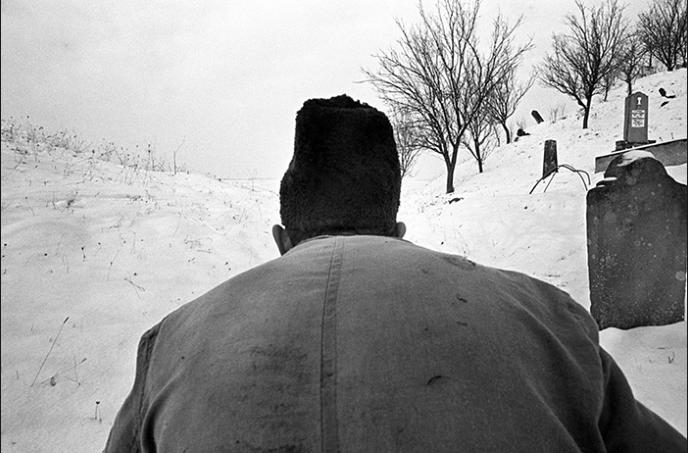
Markod, Transylvania, Romania. After a funeral the bell ringer on his way to the church to ring the bells.
Romania by Joseph Rodriguez
Copyright 2015 FotoEvidence. All rights reserved.
Photographs: Copyright© 2015 Joseph Rodriguez












